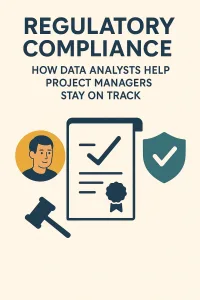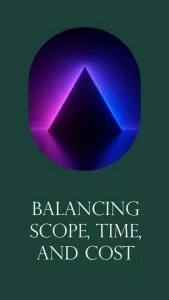Introduction
Particularly in the context of remote work, effective communication has become more crucial than ever. One of the key tools that facilitate this communication is the project status slide.
- Definition and Role of Project Status Slides: Project status slides serve as visual representations that encapsulate the current state, progress, and key milestones of a project. They are essential communication tools that inform stakeholders, team members, and decision-makers about the project’s health, potential risks, and achievements. By providing a snapshot of where a project stands, these slides help ensure that everyone involved is aligned and aware of the project’s trajectory [2].
- Shift to Remote Work and Communication Impact: The transition to remote work has fundamentally altered how teams interact and share information. With team members often spread across different locations, traditional face-to-face communication has been replaced by digital interactions. This shift has introduced challenges, such as maintaining clarity and engagement during virtual meetings. As a result, the need for structured communication methods, like project status slides, has become increasingly important to bridge the gap created by physical distance [12].
- Adapting Communication Strategies for Remote Teams: To navigate the complexities of remote project management, it is vital for team leaders and project managers to adapt their communication strategies. This includes utilizing project status slides not just as a reporting tool, but as a means to foster collaboration and transparency. By regularly updating and sharing these slides, teams can ensure that all members are informed about progress, challenges, and next steps, thereby enhancing overall project cohesion and effectiveness [15].
Project status slides are indispensable in the toolkit of remote project management. They not only provide essential updates but also play a pivotal role in fostering effective communication among dispersed teams, ultimately contributing to project success in the new normal of remote work.
Understanding Project Status Slides
Particularly in a remote work environment, project status slides serve as a vital communication tool. They provide a structured way to convey the current state of a project, ensuring that all stakeholders are aligned and informed. Here’s a comprehensive overview of what project status slides are, their essential components, and best practices for their design.
Essential Elements of Effective Project Status Slides
- Project Goals: Clearly defined goals are the foundation of any project status slide. They should articulate what the project aims to achieve, providing context for the updates that follow. This helps the audience understand the purpose and direction of the project.
- Timelines: Including a timeline is crucial for illustrating the project’s progress. It should highlight key milestones, deadlines, and any shifts in the schedule. This visual representation allows stakeholders to quickly grasp where the project stands in relation to its planned timeline.
- Deliverables: A summary of deliverables is essential to show what has been completed and what is still pending. This section should detail the specific outputs expected at various stages of the project, helping to set clear expectations for all team members.
- Challenges and Risks: Addressing any challenges or risks encountered during the project is important for transparency. This section should outline any obstacles faced, their potential impact, and the strategies being implemented to mitigate these risks.
- Next Steps: Concluding with a clear outline of the next steps provides direction for the team moving forward. This should include immediate actions required and any upcoming meetings or deadlines.
Visual Design Best Practices for Clarity and Engagement
- Simplicity: Keep slides uncluttered by using concise text and avoiding excessive information. Aim for a clean layout that allows the audience to focus on key points without distraction.
- Consistent Formatting: Use a consistent color scheme, font style, and layout throughout the presentation. This not only enhances professionalism but also aids in audience comprehension.
- Visual Aids: Incorporate charts, graphs, and icons to represent data visually. These elements can make complex information more digestible and engaging, helping to maintain the audience’s interest.
- Highlight Key Information: Use bold text or color highlights to draw attention to critical updates or changes. This ensures that the most important information stands out.
Facilitating Transparency and Accountability
Project status slides play a crucial role in fostering transparency within remote teams. By regularly updating stakeholders on project progress, challenges, and next steps, these slides help build trust and accountability. They ensure that everyone is on the same page, reducing the likelihood of misunderstandings and miscommunications.
Moreover, by documenting the project’s journey, status slides serve as a reference point for future discussions and evaluations. They can help identify patterns in project management practices, enabling teams to learn from past experiences and improve their processes.
Effective project status slides are essential for navigating the challenges of remote project management. By incorporating the key elements outlined above and adhering to best design practices, project managers can enhance communication, foster collaboration, and drive project success in a remote work environment.
Challenges in Remote Project Management
Project management has taken on new dimensions, presenting unique challenges that require innovative solutions. As remote team leaders and project managers navigate these complexities, understanding the common hurdles is essential for maintaining effective communication and ensuring project success.
Communication Barriers
One of the most significant challenges in remote project management is communication. The absence of face-to-face interaction can lead to several issues:
- Time Zone Differences: Coordinating meetings and updates across various time zones can create delays in communication and decision-making. This often results in team members feeling out of sync with project developments, which can hinder collaboration and responsiveness [6][9].
- Digital Fatigue: The reliance on digital communication tools can lead to fatigue among team members. Constant notifications and the pressure to be available online can overwhelm employees, reducing their overall productivity and engagement [4][7].
- Lack of Non-Verbal Cues: In a remote setting, the absence of body language and facial expressions can lead to misunderstandings. Non-verbal cues play a crucial role in communication, and their absence can result in misinterpretations of messages, affecting team dynamics and collaboration [6][9].
Tracking Progress and Maintaining Engagement
Another challenge faced by remote teams is effectively tracking project progress and maintaining engagement among team members:
- Difficulty in Monitoring Progress: Without the ability to observe team members in person, project managers may struggle to gauge the status of tasks and overall project health. This can lead to misalignment in expectations and project timelines [6][8].
- Engagement Issues: Remote work can diminish the sense of connection among team members, making it harder to foster a collaborative environment. The lack of informal interactions, which often occur in traditional office settings, can lead to disengagement and a decline in team morale [5][7].
Impact of Isolation on Team Dynamics and Motivation
Isolation is a prevalent issue in remote work environments, significantly affecting team dynamics and motivation:
- Feelings of Isolation: Remote team members may experience feelings of loneliness and disconnection from their colleagues. This isolation can negatively impact their motivation and overall job satisfaction, leading to decreased productivity [5][7].
- Team Dynamics: The lack of regular, in-person interactions can hinder the development of trust and camaraderie among team members. Building a strong team culture requires deliberate efforts in a remote setting, as informal bonding opportunities are limited [5][6].
While remote project management offers flexibility and access to a global talent pool, it also presents distinct challenges that require proactive strategies. By addressing communication barriers, tracking progress effectively, and fostering team engagement, remote team leaders and project managers can navigate these challenges and drive project success in the new normal.
Best Practices for Crafting Effective Project Status Slides
Effective communication is paramount. Project status slides serve as a vital tool for conveying updates, progress, and challenges to team members and stakeholders. Here are some best practices to ensure your project status slides are impactful and tailored for remote teams:
- Incorporate Concise Updates: Aim for clarity and brevity in your updates. Each slide should focus on key points to avoid overwhelming your audience with excessive information. Keeping slides clean and uncluttered helps maintain focus and comprehension, allowing team members to grasp essential updates quickly [1][12].
- Utilize Visuals and Infographics: Visual aids can significantly enhance the understanding of complex information. Incorporating graphs, charts, and infographics can help visualize insights and data, making it easier for your audience to digest the information presented. High-quality visuals not only make your slides more engaging but also facilitate better retention of the information shared [2][4].
- Encourage Team Input and Feedback: Fostering a collaborative environment is crucial, especially in remote settings. Encourage team members to provide input and feedback on the project status slides. This practice not only enhances engagement but also promotes a sense of ownership among team members, making them feel more invested in the project’s success. Establishing clear communication channels for feedback can further strengthen team dynamics and accountability [5][3].
By implementing these best practices, remote team leaders and project managers can create effective project status slides that enhance communication, foster collaboration, and ultimately drive project success in a remote work environment.
Tools and Technologies for Remote Project Management
Effective communication is paramount for project managers and team leaders. One essential aspect of this communication is the creation and sharing of project status slides, which provide a clear overview of project progress and facilitate informed decision-making. Here, we explore various tools and technologies that can enhance the process of developing and sharing these critical updates.
Project Management Tools
- Trello: Trello is a widely used visual project management tool that organizes tasks into boards, lists, and cards. This structure allows teams to easily track progress and update project statuses in real-time. By utilizing Trello, project managers can create dedicated boards for different projects, where team members can add comments, attach files, and set due dates, making it easier to compile information for status slides [3][8].
- Asana: Asana offers a centralized platform for teams to create and assign tasks, track progress, and manage deadlines. Its user-friendly interface allows project managers to generate status updates quickly, which can then be summarized in presentation slides. Asana’s reporting features also enable users to visualize project timelines and milestones, providing valuable insights for status presentations [3][4].
- Monday.com: This platform provides a flexible workspace for teams to manage projects and workflows. With customizable templates and automation features, Monday.com helps streamline the process of gathering project updates. Project managers can easily compile data from various boards to create comprehensive status slides that reflect the current state of the project [3][4].
Presentation Tools for Collaborative Editing
- Google Slides: Google Slides is an excellent tool for creating presentation slides collaboratively. It allows multiple users to edit the same document in real-time, making it easy for team members to contribute to project status updates. The cloud-based nature of Google Slides ensures that everyone has access to the latest version, facilitating seamless collaboration [6].
- PowerPoint Online: Similar to Google Slides, PowerPoint Online enables collaborative editing and sharing of presentation slides. Team members can work together to design and refine project status presentations, ensuring that all relevant information is included. The integration with Microsoft Teams further enhances communication, allowing for discussions and feedback directly within the platform [6].
Communication Platforms for Real-Time Discussions
- Slack: Slack is a powerful communication tool that supports real-time discussions among team members. By creating dedicated channels for specific projects, project managers can facilitate ongoing conversations about project status, share updates, and gather feedback. This immediate communication can significantly enhance the quality of information included in project status slides [2][5].
- Microsoft Teams: Microsoft Teams combines chat, video conferencing, and file sharing, making it an ideal platform for remote project management. Teams can hold meetings to discuss project updates and collaborate on status slides in real-time. The integration with other Microsoft Office tools allows for easy sharing of documents and presentations, streamlining the process of creating and updating project status slides [2][5].
Leveraging these tools and technologies can significantly enhance the effectiveness of project status slides in a remote work environment. By utilizing project management platforms, collaborative presentation tools, and communication channels, remote team leaders and project managers can navigate the challenges of remote project management and ensure that their teams remain aligned and informed.
Fostering a Culture of Open Communication
Effective communication is paramount to navigating the unique challenges that arise when teams are dispersed. One essential tool that can significantly enhance communication is the project status slide. This simple yet powerful communication tool serves to bridge the knowledge gap between the work accomplished and the stakeholders’ awareness of the project’s status. Here are some key strategies to foster a culture of open communication within remote teams:
- Encourage Regular Check-Ins and Feedback Sessions: Establishing a routine for check-ins allows team members to discuss project status slides in a structured manner. These sessions should focus on reviewing progress, addressing any roadblocks, and aligning on next steps. Regular feedback not only keeps everyone informed but also promotes accountability and transparency within the team. It is recommended that organizations hold bi-weekly project status meetings to stay on top of significant issues and decision points, ensuring that all team members are aligned and informed about the project’s trajectory [8].
- Promote an Open-Door Policy: Creating an environment where team members feel comfortable voicing their concerns or suggestions is crucial for fostering open communication. An open-door policy encourages team members to share their thoughts without fear of judgment, leading to a more collaborative atmosphere. This approach not only helps in identifying potential issues early but also empowers team members to contribute to the project’s success actively. By ensuring that everyone feels heard, project managers can cultivate a sense of belonging and engagement among remote team members.
- Highlight the Role of Recognition and Celebrating Small Wins: In a remote work setting, it can be easy for team members to feel isolated or undervalued. Recognizing individual and team achievements, no matter how small, plays a vital role in maintaining morale. Celebrating these wins during project status updates can boost motivation and reinforce a positive team culture. Acknowledgment of efforts fosters a sense of accomplishment and encourages continued engagement, which is essential for the overall success of the project.
By implementing these strategies, remote team leaders and project managers can create a culture of open communication that not only enhances project management but also strengthens team dynamics. In a world where remote work is becoming the norm, adapting to these practices will be key to navigating the complexities of project management effectively.
Conclusion
The significance of adapting project status slides cannot be overstated. These slides serve as vital communication tools that bridge the gap between project accomplishments and stakeholder awareness, especially when teams are dispersed across various locations. By effectively summarizing project progress, challenges, and next steps, project status slides help maintain clarity and alignment among team members and stakeholders alike.
As remote team leaders and project managers, it is essential to experiment with different strategies for communication. This could involve utilizing various formats for project status slides, incorporating visual elements to enhance understanding, or even adjusting the frequency of updates to better suit the team’s needs. Embracing flexibility in communication methods can lead to improved engagement and collaboration within remote teams.
By prioritizing effective communication through well-structured project status slides, you can navigate the challenges of remote project management more successfully. Take the initiative to refine your approach, and watch as your team’s productivity and morale improve in this new normal of remote work.
Find out more about Shaun Stoltz https://www.shaunstoltz.com/about/.
This post was written by an AI and reviewed/edited by a human.



